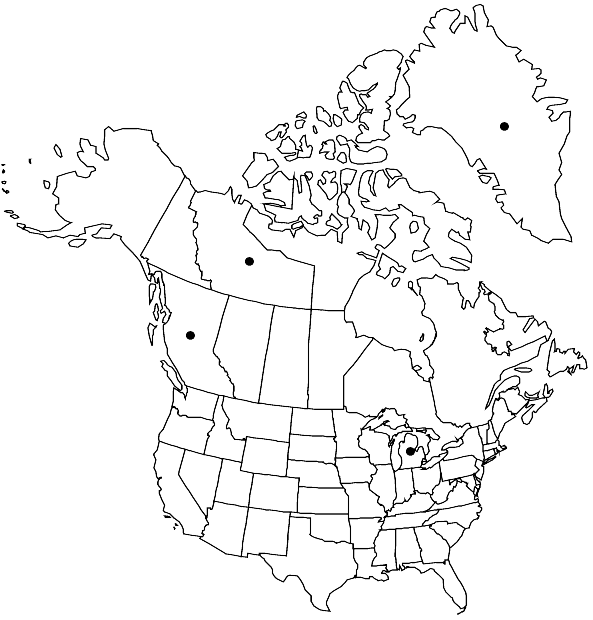Didymodon maschalogena
in H. G. A. Engler and K. Prantl, Nat. Pflanzenfam. 234/235[I,3]: 1192. 1909,.
Plants green to glossy green. Stems to 2 cm, central strand present. Stem-leaves catenulate-incurved when dry, spreading and weakly keeled when moist, monomorphic, ovatelanceolate, adaxially grooved in distal third, 0.9–1.1 mm, base often but not always sharply differentiated in shape, ovate, margins narrowly to broadly recurved in proximal 1/3–1/2, entire, apex narrowly acute, abruptly acuminate, not fragile; costa percurrent to very shortly excurrent, tapering, widened pad of cells absent, adaxial costal cells elongate, 4 cells wide at mid leaf, guide cells in 1 layer; basal laminal cells little differentiated, quadrate or very shortrectangular, walls thickened and lumens usually oval; distal laminal cells 7–9 (–12) µm wide, 1: 1, papillae absent to low, simple, lumens subquadrate to oval, walls irregularly thickened, convex on both sides, 1-stratose. Specialized asexual reproduction by multicellular spheric gemmae in leaf-axils. Sexual condition sterile in range of flora. Sporophytes not seen. Distal laminal KOH reaction yellow or orangebrown.
Habitat: Soil, rock, spray zone
Elevation: low to high elevations
Distribution

Greenland, B.C., N.W.T., Mich., Mexico, Asia, Atlantic Islands (Cape Verde), Indian Ocean Islands (Reunion)
Discussion
The significant characters of Didymodon maschalogena are the small size of the leaves, which are catenulate, and the presence of propagula; the appearance of the areolation cannot distinguish this species from many congeners but is clearly in longitudinal rows. The species is apparently widespread but of spotty distribution. It was long known as D. michiganensis, but J.-P. Frahm et al. (1996) recently found an earlier name.
Selected References
None.
Lower Taxa
"um" is not declared as a valid unit of measurement for this property."um" is not declared as a valid unit of measurement for this property.